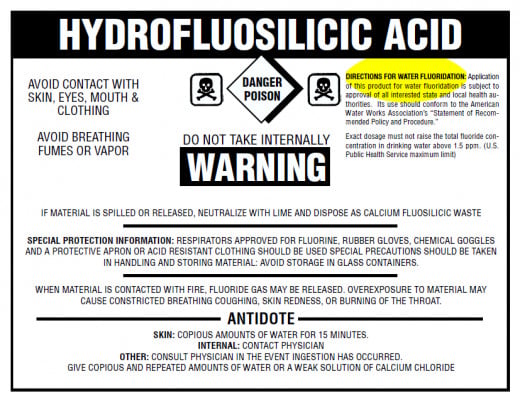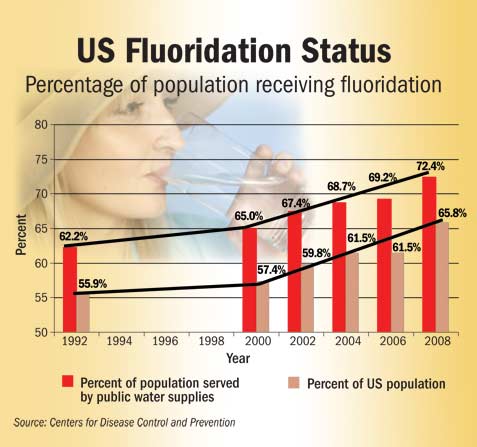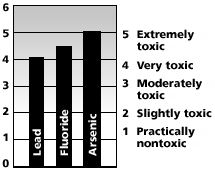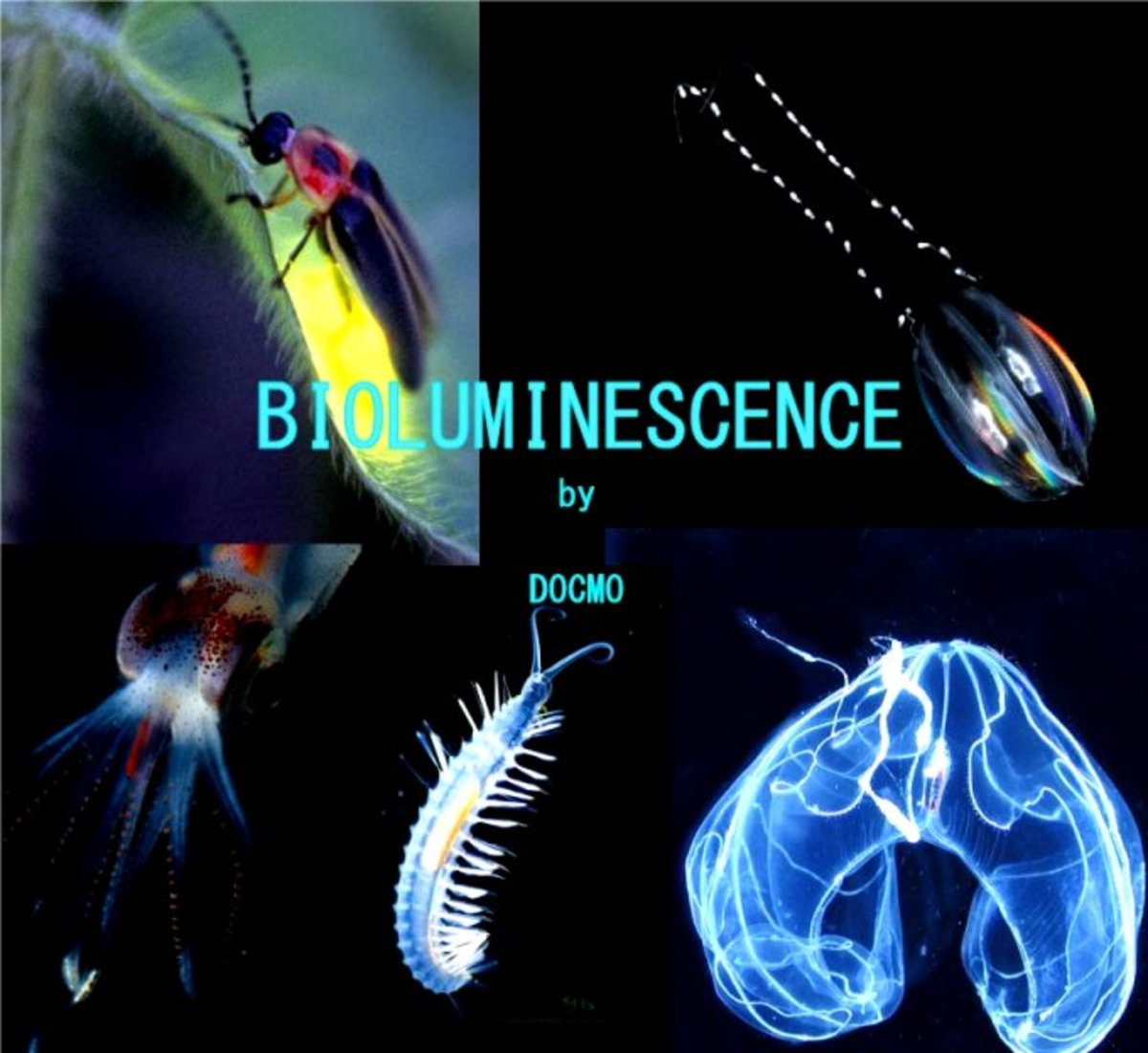Fluoridation and Biological Magnification

What is Not Being Stated in the Fluoridation Scandal
The fluoridation of the water supply in most developed countries was initially sold on the idea that this would combat tooth decay and save expenses for people in dentistry. Studies began in the 1850s on the US, but drinking water was not fluoridated until 1945 in the US and thereafter. Other developed countries around the world followed the US lead in the following years. Non developed countries do not fluoridate water supplies. Some regions are now reversing track on fluoridating water due to the controversy of its negative effects. The positive effects suggest that minute amounts of the chemical, which comes in three main varieties, does promote dental and skeletal health. Some regions of the world have naturally fluoridated water. However, in larger doses, fluoride can actually be harmful to health affecting various organs and causing such conditions as;
-
calcification of glands like the pineal, thyroid and adrenals
-
arteriosclerosis due to enhanced plaque buildup
-
nervous system disorders including weakening of mental capacity
-
inflammation in any part of the body
-
arthritis, especially at an early age
-
increasing risk of bone fractures with age
-
toxaemia
-
immune dysfunctions
-
compromised healing
-
reproductive dysfunctions, sterility, spermicidal, ED, etc.
-
cancer

Bear in mind that this is in the context of a bottom line for profit paradigm, thus indicating a contradiction. Why would something be promoted that would reduce profits instead of being a source for potential increase. The real story suggests that there was a media campaign to sell fluoridation to the masses while they were ignorant of its real effects. This was to emerge much later when people gradually became aware that something was wrong. But the fluoridation of drinking water does not end at drinking water. Variously, the regions that fluoridate water include it as a general application and the water not only ends up in the drinking water, but also in water for crops and food animals. This by product accumulation of fluorides in the food chain, even occurs in organic food, especially if irrigated with fluoridated water. The run off goes into the environment and even effects wild ecosystems. We use a massive amount of water in almost every application and fluoride can accumulate where water evaporates off leaving behind the chemicals in the soil and everywhere else.
Now, as stated, trace amounts have little of no effect, but accumulating concentrations are a different matter. As the chemical accumulates, it is taken up by food plants and animals. We eat those and get additional fluoride from all of our food as well as drinking it down in tap and bottled water. We absorb it in showers. Any liquid including alcoholic beverages also contain water that has been fluoridated. Thus the real dose that we get is far higher than we are told that comes from drinking water alone. If it were just isolated to drinking water, it probably would be safe enough, but we are not in an isolated situation. It is not tap water isolated, but has accumulated in the environment since 1945 in the US and ever since it was introduced elsewhere around the world. With each passing year. The concentrations of the chemical residue increase in the environment, making each year more dangerous to general health due to ever accumulating levels of the chemicals.
People began to question the use of fluoridation and this showed up initially in films such as Dr. Strangelove. The questions grew in volume and frequency until today, there are major discussions on the internet and alternative news stations. But even there, the full story outlined above is not described in full. The situation, when one reasons it out, is actually worse than what is told on the surface. The diseases resulting from fluoridation overdose come from everything the fluoridated water touches. It is not water alone that is the culprit, but a growing accumulation in the environment that we end up picking up by a process called biological magnification. This process is usually cited with the case of pesticides. One of the earliest recognitions occurred with the observed effects of DDT on apex predators like eagles and falcons. It was determined after researching what was causing the eggs of the apex predators to get thin shelled and fragile, thus endangering the birds. It was determined that DDT that washed into the watershed and that was in insects that fish ate wound up being caught and eaten by eagles and falcons. Thus the relatively small amounts of DDT that began in the insects, concentrated in the fish which were then caught by the birds and each of these levels in the food chain received ever greater concentrations of DDT. DDT ended up being banned in the developed world as a result. But this did not stop the use of pesticides, nor the use of DDT in other countries. It appears that fluoride goes through a similar process of concentrating as the water that contains trace amounts goes through the same process of accumulation from plants to animals to people. We are in effect, receiving far more fluoride than just in our drinking and bathwater. We are getting hidden fluoride in vegetables, fruit, nuts, diary products and meat as well. By now, with the process of water fluoridation having been in effect for seventy plus years, we have been getting ever increasing doses.
Bearing this in mind and the fact that fluoride is not completely flushed from the bodies daily intake of fluoridated water, there is a double whammy with it coming from the water and any food product raised on fluoridated water as the vector for growth and watering. The kidneys are only able to flush 50 to 60 percent of the fluoride accumulation a day from water intake, leaving the rest in the body to be absorbed in all tissues. The US standard for fluoridation is 4 mG/L of water or 4 ppm (parts per million) (8).This means given the incomplete elimination of the substance from the body, each one of us a residue of 4 mG per day given the drinking of 2L of tap water a day alone throughout life.. Figures for absorption from food is more difficult to calculate due to a host of variables. This quantity from drinking tap water is diluted throughout the body and is deposited wherever it can find a “home”. Over a period of a thousand days (a little more than three years), the average body retains 4 grams of the substance. When one reaches the age of 30 to 32, that amount becomes 40 grams throughout the body from consuming fluoridated water alone. The addition from food may increase that figure dramatically, especially if the food is already saturated with fluoride residue. This part, as stated is unknown. Immediate toxic effects occur when levels reach 5 to 10 grams or 32 to 64 mg/kg of body weight (9). Given this, one can easily reach the toxic load by age 10. After a lifetime of accumulating, it is easy to see why toxic effects tend to increase with the onset of age.

Is there a way to stop and remove fluoride buildup? If you are under 68 (epoch 2013), you have a lifetime and systemic buildup as you have had a dose every day of your life from your birth. The younger you are, the better off you will be if you cut out as much as possible as soon as possible. For older folk, the situation can only be improved, but it will not likely be totally removed from your body before death sets in, possibly induced by fluoride toxification. Avoid drinking tap or bottled water. Use distilled water or filtered water using a reverse osmosis method of filtration. Be more careful the older you are as the toxic load is high and one does not want to induce toxic shock with the sudden release of fluoride deposits in the body. Sudden weight loss may also trigger a toxic shock by driving such a release. For the most part, our bodies seem to have adapted to such high levels of the substance, but not without serious consequences listed above.
Here then is what can be done. Avoid processed foods of any kind. All restaurant drinks like coffee and tea have fluoride from tap water used to make them in house. It's even in the beer, wine and liquor made in vast amounts in local distilleries. The best bet is to drink beer, wine and liquor imported from Europe, Africa, Australia, Asia and New Zealand. All vegetables, fruit, nuts, meat, tubers, roots, etc. have fluoride in them if watered from the source that fluoridates the drinking water. Not all fluoridated water is used for drinking. In fact, much more is used for bathing, watering lawns and gardens and the like. This is where fluoride run off comes from. The same water irrigates all the crops and is given to animals to drink. The whole agribiz system is contaminated with it. You may be able to obtain organic food without the fluoride content, but it is highly doubtful, especially if they use the same water sources as traditional non organic farming. About the only reasonably safe bet is wild non irrigated food of all kinds found away from irrigation and run off channels. You may chose to use non fluoridated water to grow your own food, but that does nothing to eliminate fluoride already in the soil and the process of using non fluoridated water can be very expensive if you need to augment rainwater. Rain water has the additional problem of industrial pollutants, exhaust from internal combustion and last but not least; chemtrails!
It has been suggested that certain herbs will remove fluoride from your system, but this is somewhat controversial for the foregoing reasons. We will mention one which is the use of seaweed uncontaminated by fluoride run off from agribiz on the coastlines. Kelp, Nori and Dulse are all good sources of iodine in trace amounts that will help the body eliminate the toxic buildup of fluoride.
Early on, we were all sold on the benefits of fluoridation of drinking water. It is further argued that some water contains it naturally, which is true for some places in the world. This fact does not lessen the accumulative toxic dangers. The following excerpt tells us were most fluoride in our drinking water comes from.
“Fluoride is a soluble salt, not a heavy metal. There are two basic types of fluoride. Calcium fluorideappears naturally in underground water sources and even seawater. Enough of it can cause skeletal or dental fluorosis, which weakens bone and dental matter. But it is not nearly as toxic, nor does it negatively affect so many other health issues as sodium fluoride, which is added to many water supplies.
Sodium Fluoride is a synthetic waste product of the nuclear, aluminum, and phosphate fertilizer industries. This fluoride has an amazing capacity to combine and increase the potency of other toxic materials. The sodium fluoride obtained from industrial waste and added to water supplies is also already contaminated with lead, aluminum, and cadmium.” (7)
There is an additional problem with fluoride and that is the susceptibility to chemical reactions with other elements and organic molecules. Mush of this domain is unknown to the public, but fluoride can react with internal organic chemistry causing a whole host of symptomatic conditions that mimic disease symptoms. Indeed, the existence of this chemistry may trigger certain diseases. It is known for instance, that some people develop a condition where they become allergic to many common chemicals like cleaners, perfume and paint. It is also known that this is an onset condition that can develop gradually toward a crisis wherein-after the patient experiences excruciating symptoms in the presence of many chemicals. The buildup of fluoride in the system contributes to this kind of sensitivity. These days, children are already in this state at the moment of birth suggesting that the toxicity is passed on to the child from the mother. Thus, to prevent trans-generational transfer of toxicity, the mother has to already be on a program of elimination of the chemical and the avoidance of ingesting any more from all sources.
Fluoride in our environment is something that will take a long time to correct as it has taken almost 70 years to get to this stage. There are long term and short term solutions. As we now know that this chemical is lethal in high concentrations, we have to ask, why was this placed into the drinking supply in the first place? Some argue that this was done to prevent cavities. But emerging evidence shows no such pattern and that in fact, accumulated amounts of fluoride in the system actually have the reverse effect. If the bones are weakened, then it follows, so are the teeth. Industrial processes dredge up a lot of the chemical that is released in tailings from many mining operations for the metals and minerals cited above. This gets into the water supply through ball milling to concentrate metals like aluminium, copper and uranium usually found in granite and similar geologic structures. More comes from the manufacture of fertilizers. This gets into the ground water and into drinking supplies. Deliberately adding it is another question altogether. This may have been done as an intervention ploy to lessen fears in the population about fluoride in water from mining tailings. It may have also been a method to distribute the toxic load across the nation, as there was no safe place to locate large amounts in concentrated form.
As it stands, the only sure way to stop environmental fluorides from accumulating is to either find a way to bind the fluoride so as to render it inert, or stop mining processes that release it and concentrate on recycling what we have. As of this writing, there is no sure fire way to render it inert. However, there are water distillers on the market that will provide one with a good supply of distilled water. These tend to be less expensive than the reverse osmosis filters. If you use a distiller, just be careful come clean up time when removing fluoride residue.
References:








